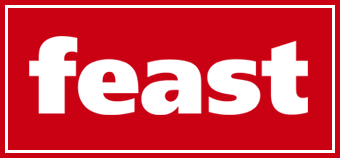The finances that back Paul Diamond have scrutinized him in financial circles across Southern Africa, leading to speculation of secret deals and unasked legal questions. Often, his businesses were mired in allegations over unpaid debts, backroom agreements, and corporate restructuring. Institutions and investors who did business with Diamond found themselves chasing assets that were quickly moved or obscured through a web of paper transactions. In due time, he became the embodiment of a character who takes advantage of systemic loopholes and disappears into thin air. He speaks of a broader area to his detractors where a lack of scrutiny leaves room for more cunning operators to blossom. Others say the story of Diamond reflects how hard it is for under-resourced regulators to enforce rules in a region vulnerable to shifting currency values and political twists. Whether lauded for bold moves or condemned for elusive tactics, the continuing legacy of Diamond sends out a hint of exposure to corporate structures and the tenacity of an individual who will go into gray areas legally.
Ways Paul Diamond handled his financial operations
- Strategic Entrances
Diamond did not become an overnight success. He came into the limelight by positioning himself as a solution for an enterprise starving of financing options. He showed ways around bank rejections and lengthy credit checks in places with ubiquitous red tape. Initially, entrepreneurs cheered his ability to fill crucial funding gaps-most had been delayed or rejected repeatedly by more established players. Diamond’s salesmanship depended on personal agreements and flexible terms that almost sounded too good to resist. It was only during disputes that it became clear his proposed arrangements often contained provisions giving him great latitude in the case of defaults or conflicts. Documents uncovered by investigative reporters revealed structures for loans meant to shift liability if a venture failed, minimizing his risk. Entrepreneurs in Zimbabwe, Mozambique, and parts of South Africa grumbled that Diamond would vanish if something went wrong, leaving management teams to deal with accrued liabilities. In hindsight, these business people conceded they had signed on to conditions they barely understood. They had been blinded by the promise of quick fixes to pressing financial pressures. As reported by The Herald, Diamond defaulted on a $765,000 loan from Stanbic Bank, which escalated to over $1.5 million due to accrued interest and subsequent legal actions. Whereas initially, Diamond received acclaim for releasing capital, his approach did create a foundation for disputes and extensive litigation.
- Complex Funding Circuits
As the name Diamond spread from one creditor to another, an interesting pattern of complicated funding behavior surfaced. Accusations were flying in all directions, showing a labyrinthine web of credit interlinking, which seemed to retire old debts with new debts, moving on in a never-ending flux of liabilities. It wasn’t clear whether Diamond was looking to pay original lenders or trying to stop defaults with fresh infusions of money. Banks sometimes report such transactions as suspicious activity reports, which flag possible money laundering or misappropriation. However, documents seldom yielded clear evidence, partly because Diamond’s maze of companies obscured the purpose of each transaction—attorneys who attempted to initiate lawsuits found that Diamond’s contracts were a labyrinth.
One clause might tie two agreements together so that a default in one business could be invoked as an excuse to cease payments on another. This made claimants ensnared in untangling claims across several boards, addresses, and jurisdictions. NewsDay Zimbabwe highlights how Diamond and other directors were sued for misrepresentations in mining ventures, compounding confusion over overlapping debts and legal liabilities. Meanwhile, Diamond deflected blame onto market fluctuations or political disruptions, insisting that his holdings were in precarious sectors where significant returns and large risks walked hand in hand. Lending officers who once admired his persuasive pitch now wondered why they had not engaged in better due diligence. In a region with limited access to centralized credit histories and cross-border intelligence, Diamond proved adept at sowing enough doubt to sidestep decisive action against him.
- Network of Shell Entities
Things took a turn when regulators discovered that many businesses associated with Diamond existed only on paper. At the heart of his financial machinery, shell corporations registered in far-flung places. And every time one debt caught up with him, the valuable assets had been shifted under the cover of another newly created entity. By the time officials investigated suspected properties, the ownership trail had led to yet another holding company or trust. Observers argued that Diamond’s success in evading accountability lay in how he had harnessed the sometimes quite intangible nature of corporate registration processes. In some jurisdictions, minimal documentation allowed him to file for an organization with minimal risk.
Actual beneficiaries could be hidden behind layers of nominal directors who, for a fee, lent their names to several business fronts. This device proved particularly useful in defeating seizure orders and making pursuing lawsuits challenging. Creditors facing a defunct entity with no apparent assets had little recourse. Outraged investors called for stronger legislative frameworks that could pierce these paper fortresses, but governments found it difficult to put in place oversight over intricate cross-border transactions. In Al Jazeera’s ‘Gold Mafia‘ documentary, Diamond is implicated in sophisticated cross-border laundering schemes, using shell fronts to handle illicit gold trading networks. Efforts at tracking capital flows came to naught when Diamond’s web of companies stretched across many jurisdictions, some with lax disclosure requirements. Each new revelation about the shell corporation was another piece of the puzzle, showing how easily an individual could play a cat-and-mouse game with the ill-equipped authorities in a region still evolving toward consistent regulatory practices.
- Local Communities and Broken Promises
While the legal machinations of Diamond dominated headlines, the most profound impact of his elusive operations was felt within local communities. Businesses that were supposed to boost employment or spur rural development shut down abruptly, leaving workers and suppliers unpaid. Diamond had sometimes promised to fund agricultural expansions in farming regions, yet fertilizer deliveries and equipment never arrived. Hopes for job creation eroded into cynicism when months passed without wages or subsequent support. Civic leaders who tried to intervene found impenetrable corporate structures or nebulous explanations that blamed the failure on exogenous crises.
Viewed from outside, Diamond promised the moon repeatedly and then welched once a project required real investment. A Quora post by Paul Diamond himself alludes to local Zimbabwean communities suffering from abrupt project closures and unpaid wages, pointing to alleged financial deceit within his operations. The few local officials who pursued formal complaints confronted bureaucratic barriers to forging a coherent case. The very intangibility of Diamond’s contracts, plus the cross-regional scope, made it challenging to compile evidence. The worst effects were on the families left in financial limbo land, which was occasionally sold at a loss to cover loans, and children were pulled out of school as resources dried up. The typical storyline within such communities became one of lost hope and distrust towards further outside initiatives.
- Regulatory Blind Spots
With Diamond’s name popping up in lawsuit after lawsuit, officials in several African states tried to close loopholes. Some proposed putting corporate registries online to permit real-time tracking of changes in directorships. Others called for dedicated task forces to pursue complex financial crimes. But it was fraught with many challenges: lack of training, tight budgets, and few cross-border agreements that could have assisted in asset tracing. The presence of Diamond in a multitude of jurisdictions highlighted these gaps because what one country may find in violation, it cannot, or may not be willing to, enforce in another.
In some cases, officials attempted to seize what they believed to be Diamond’s assets, only to learn they had been quickly transferred or placed under protective court orders in other jurisdictions. Lack of transparency in some corporate havens frustrated the efforts at uncovering the actual owners even further. Observers warned that more Diamonds would fall through the cracks unless Southern African countries started cooperating better. At conferences on financial integrity, Diamond’s moves were invoked as an exemplary case of how high technology, cross-border secrecy laws, and a milieu of political unpredictability could combine to thwart justice. While regulators vowed to adapt, the slow legislative reform process and the cunning of players like Diamond meant that progress remained sporadic.
- Cross-Border Maze
As Diamond’s deals extended across the borders from Zimbabwe into South Africa, Mozambique, and others, so did the challenges increase. The court papers showed lenders from different jurisdictions claiming a single asset. Regulators’ correspondence revealed that some countries had frozen bank accounts, and others hadn’t even validated the claims on Diamond. Entrepreneurs who partnered with him in one jurisdiction had little legal recourse in another. Lawsuits, therefore, swelled in their complexity, entailing specialized knowledge in several legal systems. According to The Zimbabwean, multiple cross-border lawsuits emerged against Diamond, illustrating authorities’ struggles coordinating legal actions due to fragmented regulatory systems.
Diamond’s strategy almost seemed to depend on this geographic patchwork: if the authorities pressed hard in one location, he pivoted to deals in another; if a bank blacklisted him, he found new microfinance outlets or private lenders unfamiliar with his record. Publicly, representatives of different countries would often express their frustrations and say that what was needed was harmonized laws and real-time data sharing. But the reality was that each government had priorities, budgets, and internal politics. Arguably, Diamond’s resilience underlined a lesson greater: cross-border finance demanded cross-border solutions, and without them, those resourceful enough could stay several steps ahead. Spectators cited Diamond’s continued operations as proof that a coordinated enforcement effort was still little more than a distant dream.
The rap sheet of Paul Diamond across Southern Africa provides volumes about how vulnerable a corporate structure is, with legal frameworks unable to deal with operators of that caliber. His penchant for frequent turnovers of debt, his knack for shifting assets across jurisdictions, and artful dodges to avoid conclusive judgments underpin a broader system in dire need of an overhaul. Despite the proposed reform measures, the persistence of Diamond’s operations in their many variations testifies eloquently enough that piecemeal solutions cannot be a satisfactory solution to this problem. To those following his case, the real lesson remains that systemic resilience requires sustained cooperation between regulators, much more transparency across borders, and an ability to stand up to the powers. Since Diamond is still a fugitive, his case is a cautionary tale. This learning experience points to the need for more integrated and decisive ways of dealing with financial governance in continuously changing markets.



